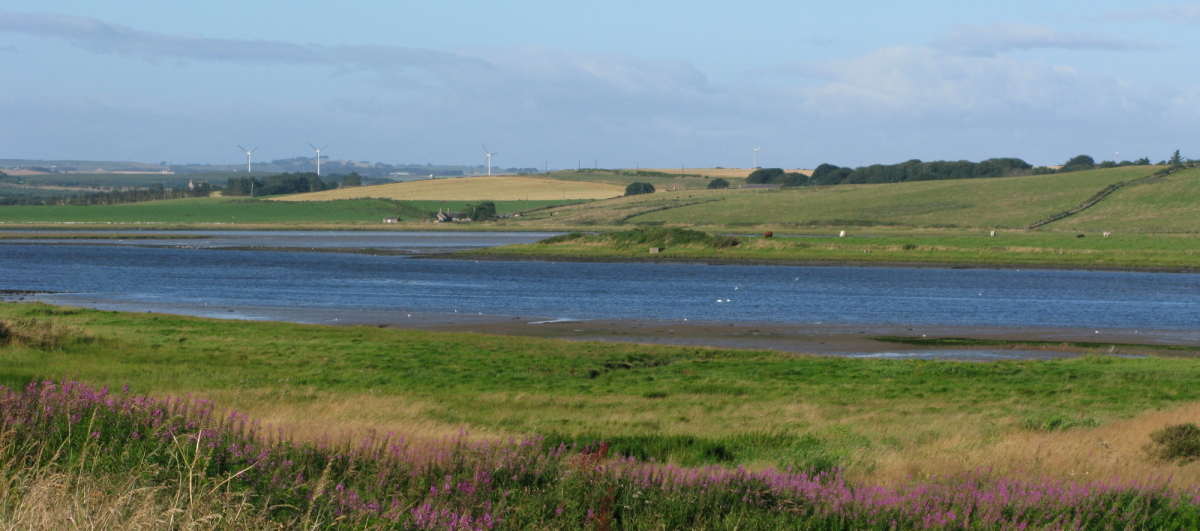Climate change poses a substantial threat to Scotland’s air, water, soils, geology and all living things – our natural capital. There is therefore an urgent need to research the impacts of climate change on Scotland’s assets such as plants, animals, fungi, insects, microbes (biodiversity) and our diverse range of habitats like forests, moorlands, wetlands, farmland, to understand how they may respond and be able to provide essential ecosystem services (the benefits we get from nature), such as water and climate regulation and ability to supply food.
Project aim
This project, supported by the Scottish Government’s Strategic Research Programme, will address two key questions:
- What are the risks to Natural Capital assets from climate change?
- What are the opportunities for Natural Capital assets to mitigate the impacts of climate change on Scotland’s environment, communities and economy? In other words, how might climate change impact the ability of Nature to function and perform key processes such as carbon sequestration?
About the project
The rationale
Natural Capital underpins all aspects of human life and our economies through the delivery of ecosystem services, often described as our ‘life support systems’. However, Natural Capital is increasingly at risk from climate change, jeopardising the supply of ecosystem services and reducing the potential for Nature-based Solutions for climate change mitigation and adaptation. The differentiated impacts of climate change on the many types of assets that make up Scotland’s Natural Capital is likely to determine how species, ecosystems and landscapes function and provide ecosystem. Of particular concern is that the potential for ecosystems to mitigate climate (climate regulation) is reduced, or worse, change means assets (such as peatlands) increase greenhouse gas emissions. To avoid this damaging positive feedback loop and improve our management and use of Natural Capital, it is essential we increase our understanding of what the impacts of climate change are likely to be, either positive or negative, on Natural Capital assets, and how ecosystem services are affected. This is needed to improve planning and decision making to protect and enhance ecosystems and maintain benefits to continue supporting societal economic and wellbeing development.
Detailed information is needed to help realise the potential for NC to enable Scotland to achieve net-zero emissions with the help of Nature-based Solutions.
Our approach
To develop a ‘Risk and Opportunities Assessment Framework’ that enables us to integrate data representing Natural Capital assets over space and time, simulate climate change impacts using future high resolution climate projections (daily, at 1km scale) and apply a range of assessment criteria to determine how assets may change. A key part will be to explore how impacts on one type of asset may cascade onto other assets.
The concept
Risk is a function of an assets’ Vulnerability and how Exposed it is to a range of Threats (R=VET).
- Vulnerability is defined as “The degree to which a system [asset] is susceptible to, or unable to cope with, adverse effects of climate change, including climate variability and extremes. Vulnerability is a function of the character, magnitude, and rate of climate variation [Threat] to which a system is exposed, its sensitivity, and its adaptive capacity.” (IPCC 2001). Vulnerability is an indication of an asset’s resilience and includes its adaptive capacity (with or without human intervention), reflecting its ability to cope with or withstand different types of Threat (e.g., extreme events) or exceedance of variation (climate trends). Vulnerability can be sub-divided into biophysical and social dimensions requiring different approaches. Assets may have vulnerability tolerance thresholds (tipping points) beyond which it cannot or is unlikely to recover. Cascading vulnerability refers to inter-connection with other assets: one asset may have low direct vulnerability to climate change but relies on another that has high vulnerability.
- Exposure: “The nature and degree to which a system is exposed to significant climatic variations” (IPCC 2001). Exposure is concerned with the spatial extent, quantity and condition of an asset (e.g. abundant versus rare) and sensitivity to different Threats and their probabilities (e.g. frequency, severity and spatial distribution of droughts).
- Threat encompasses different types of threat (climate, social, biological) an asset is exposed to and whether it is direct (e.g. climate extreme event, flood, drought, storm) or indirect (fire susceptibility due to drought, altered energy and nutrient transformation in food webs). This includes the nature and severity of the climate threat, its spatial extent, frequency and intensity and or duration. The approach will enable us to identify the scale of risk to assets and which ones are at most risk or have the greatest beneficial potential. The spatial application enables assessments of how risk varies by location in Scotland and how this relates to land management and land use change (e.g., peatland restoration, woodland creation, agriculture) driven by multiple pressures.
The goal
To provide information and evidence as risk and opportunity maps with underpinning data analysis and interpretation to enable preparedness and development of policies and land management approaches that protect and enhance Scotland’s Natural Capital assets.
The context
A need for multiple societal benefits from healthy multi-functional climate-resilient landscapes. The research is designed in recognition of policy contexts to achieve net-zero emissions, reverse biodiversity decline and enhance ecosystem services whilst maintaining vibrant communities and profitable businesses.


